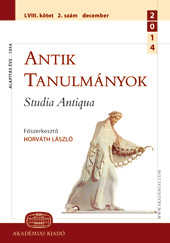A durai zsinagóga nyugati falképciklusának vallási és politikai üzenete
Religious and political message of the western wall clock cycle of the Durai synagogue
Author(s): Géza XeravitsSubject(s): Cultural history, Visual Arts, History of Judaism, Biblical studies, History of Religion
Published by: Akadémiai Kiadó
Keywords: Dura synagogue; Late antique Jewish art; Interpretation of the Bible; Effective history;
Summary/Abstract: The west wall of the Dura synagogue is a kind of political and religious manifesto. The first artist of the west wall accentuated the enduring covenant between God and his people and the continuity of the cult. The second artist picked up these overall Leitmotivs, and expanded them by adding the figurative paintings. The modifications to the central panel emphasise the idea that Israel is a people chosen by God, in whose history God’s promises and the forefathers’ blessings are fulfilled. This is complemented by the wing panels, where Moses, the pre-eminent figure of the past, is depicted. This Mosaic cycle shows religious/cultic orientation. This aspect is further emphasised by the middle register of the narrative panels. As we look at the narrative panels, we see that the middle register has a kind of central position—framed by the top and bottom registers—which assigns to it a basic or essential place within the composition. The message of this mural is to meditate upon the believer’s relationship with God. After articulating the religious message of the west wall, the artist turned to political issues. The paintings of the bottom and top registers recalling various events of the histoire sainte—affirm the pre-eminence of the Jewish people. Affirming this in a minority context and in an especially turbulent period of regional history, these panels carry a message of consolation.
Journal: Antik Tanulmányok
- Issue Year: 56/2012
- Issue No: 2
- Page Range: 257-276
- Page Count: 20
- Language: Hungarian
- Content File-PDF

